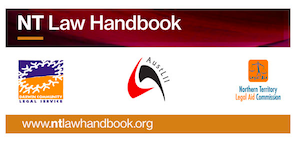-- JonathanMo - 14 Sep 2015
Where the fundamental form of an article is common, the courts may not require startling differences from prior designs in order to allow registration. See D Sebel and Co Ltd v National Art Metal Co Pty Ltd (1965) 10 FLR 224 at 226:
Requirements for registrability
A design has to meet a number of key requirements before it can be registered and legally protected in the market place, namely:- the design has to embody features of shape, configuration, pattern or ornamentation, which can be two or three dimensional
- the design features must be visible, but do not need to have artistic merit
- the design must be new. 'New' in this context means the design (or one very similar) has not been in the public domain either within or outside Australia, including the internet. Hence, the design cannot be registered if it has been used or sold within or outside Australia or used or shown in public before the first application for registration
- the design must also be distinctive. 'Distinctive' means substantially different in overall appearance to other designs in the public domain. In assessing distinctiveness, more weight will be given to similarities in the overall impression to other designs rather than the differences.
'New and distinctive'
Under section 15(1) of the DA, a design is registrable 'if the design is new and distinctive when compared with the prior art base for the design as it existed before the priority date of the design'. A design is 'new' and 'distinctive' unless it is identical or substantially to a design that forms part of the prior art base for the design [DA s.16]. The 'prior art base' consists of designs publicly used in Australia, and designs published in a document within or outside Australia, and certain other designs under section 15(2) of the DA. The current test is stricter than that required under the old law, since both novelty and distinctiveness are required. (The old Act required only one or the other.) However, even a new use of old features that have been used in prior designs may still be new or original.'Prior art base'
In respect of the quantum of difference in order to qualify as new and original, the NSW Supreme Court said in British Franco Electric Pty Ltd v Dowling Plastics Pty Ltd [1981] 1 NSWLR 448, that 'it was not sufficient to point to any difference between the design and previously published designs to establish novelty or originality. There must be a substantial difference, having regard to the nature of the article to which it is to be applied'. The differences must be 'more than mere trade variations which any skilled workman might make'. See also Conrol Pty Ltd v Meco McCallum Pty Ltd (1996) 34 IPR 517:in deciding whether a design is new or original, and in the course of doing so whether differences between the design and earlier designs are substantial, the eye is the judge.
the element of novelty or originality will of necessity be likely to be within a small compass. I do not mean thereby that any difference of shape, outline proportion or placement of components will thereby constitute novelty of design, but provided I can see a substantial difference from the fundamental form ... then I do not think that is sufficient to point to a number of elements of similarity to past design in order to show that the design is not new or original.
Prior registration, publication or use
Prior publication, even where that publication is of the design for which registration is sought, can defeat an application for registration. There is authority for the proposition that publication can occur even where the design is not made available to the public at large (see Safe Sport Australia Pty Ltd v Puma Australia Pty Ltd (1985) 4 IPR 120). The meaning of 'publication' is narrower than that used in copyright law. See the comments of Gummow J in J Rapee and Co Pty Ltd v Kas Cushions Pty Ltd (1989) 90 ALR 288; 15 IPR 577. The evidence of prior publication may be used to establish that the applicant's design was not new or original However, certain publication or use may still be permitted without compromising novelty and originality. These include secret use [DA s.17(1A)]; publication or use after the application priority date; publication or use in breach of the design owner's confidence, provided registration is applied for with reasonable diligence when the publication or use becomes known; and display at an 'official or officially recognised international exhibition' within six months before application for registration. Copyright © by the contributing authors. All material on this collaboration platform is the property of the contributing authors.
Copyright © by the contributing authors. All material on this collaboration platform is the property of the contributing authors. Ideas, requests, problems regarding AustLII Communities? Send feedback
This website is using cookies. More info.
That's Fine

